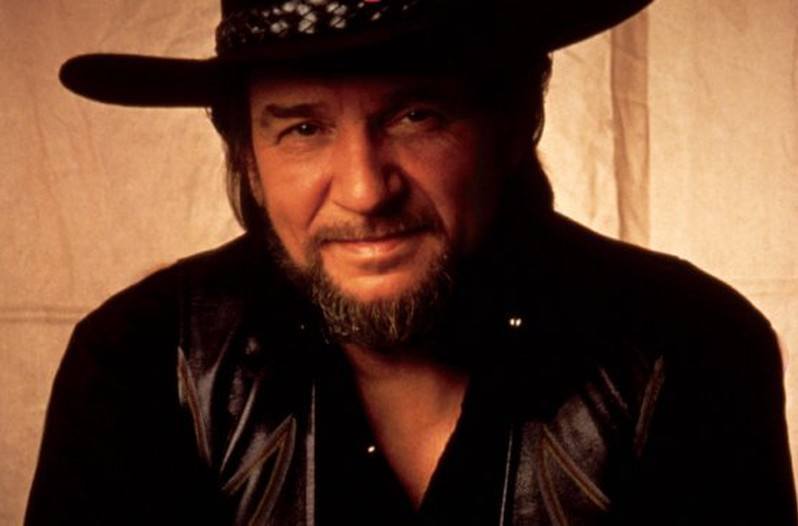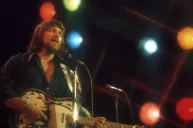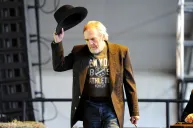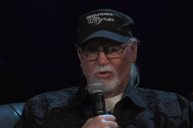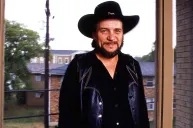Waylon Jennings is one of the outlaw country movement's most beloved honky tonk heroes. He followed his own path and created music that still resonates today.
Videos by Wide Open Country
But there's a lot more to the man than simply being an outlaw icon. He was a devoted father and recovering addict who stuck to his guns and championed anybody who made art on their own terms.
The legendary singer passed away on Feb. 13, 2002 at age 64. Here are five stories that really capture who Waylon Jennings was.
READ MORE: Sturgill Simpson, Jamey Johnson Perform at Waylon Live Tribute
5. His bond with Buddy Holly (and his motorcycle)
Waylon Jennings had a special relationship with American music trailblazer Buddy Holly. In fact, Holly produced some of Jennings' first ever music in New York City at the ripe young age of 21. The two actually grew up in the same area (Lubbock for Holly, Littlefield for Jennings), and perhaps that connection also led to the fast-forming bond between the two.
Holly asked Jennings to be his bass player on the road with his band the Crickets in 1959. When their tour bus first broke down, Holly hired a private plane to fly him, Jennings and guitarist Tommy Allsup to the next show. J.P. Richardson (known as The Big Bopper) asked Jennings for his spot on the plane, since he was suffering from the flu.
Jennings obliged, and Holly later joked with him, "I hope your ol' bus breaks down." Jennings responded, "Well I hope your ol' plane crashes." Those words haunted Jennings for the rest of his life, as the private plane went down miles after takeoff, killing all aboard. "God almighty, for years I thought I caused it," Jennings later said.
Flash forward two decades after the plane crash to 1979, on Jennings' 42nd birthday. Two of Buddy's former bandmates tracked down his 1959 Ariel Cyclone in Austin, Texas. They bought it back and loaded it into Jennings' hotel room while he was away. Jennings came back to his room that night to find the bike sitting there.
So what did he do?
"What else could I do," Jennings said. "I swung my leg over it, stomped on the kickstarter, and it burst into roaring life. First kick. It was midnight, and it sounded twice as loud bouncing off the walls of that hotel room. I knew Buddy wouldn't mind."
Jennings' estate eventually sold the motorcycle to the Buddy Holly Center in Lubbock.
READ MORE: Country Music Hall of Fame Announces 2017 Inductees
4. Driving a hard bargain and walking out
Waylon Jennings notoriously didn't take lip from his music industry counterparts. There was that time he walked out on the CMA Awards in 1970 when they kept reducing his time slot, eventually down to only a verse and chorus. Or when he walked out on late night host Tom Snyder, who similarly snubbed Jennings' time.
https://www.youtube.com/watch?v=fNAM3Z7gCQ8
But perhaps the most famous story about Jennings refusing to bend to the will of the industry involved an inadvertent bathroom break.
When Jennings renegotiated his contract with RCA records in 1973, it gave him way more creative control. And of course, that led to way more success with Lonesome, On'ry and Mean. But before Jennings was able to get to that point, he had to negotiate his new contract with RCA. Alongside new manager Neil Reshen, Jennings sat down to discuss the details with Jerry Bradley and Chet Atkins.
According to Jennings' autobiography, the final meeting got very tense. Jennings felt he deserved an additional $25,000 on the contract, but neither Bradley nor Atkins wanted to give it to him. During several totally silent minutes at the meeting, Jennings had to pee. So he got up to leave.
A few minutes later, Reshen greeted him in the hallway, saying, "You're a friggin' genius walking out like that! That sewed it up. Where did you go?" Jennings told him he had to take a piss. "Well that was a $25,000 piss!" Reshen responded. RCA Nashville was lucky they obliged, because Jennings subsequent work with the label was some of his best.
READ MORE: 5 Badass True Stories From the Outlaw Movement
3. Recording music his own way with people he wanted to work with
Even after years of success doing things on his own terms, Waylon Jennings still met pushback when it came to calling the shots on his music. For 1976's album Are You Ready for the Country, Jennings wanted to work with a producer out of Los Angeles, Ken Mansfield. And RCA, those boogers, said no.
Keep in mind, this is right around the time Jennings, Willie Nelson, Tompall Glaser and Jessi Colter were a part of Wanted! The Outlaws, which became the first studio album to sell a million copies in country music. That album dominated the country charts with songs like "Good Hearted Woman," one of his greatest hits. It even won Album of the Year from the Country Music Association in 1976. And they still wouldn't trust him.
Part of that came because Jennings wanted to consistently push the boundaries. He wanted to make studio albums that fused with traditional country music with a rock-driven sound, and the world of record labels was pretty adverse to doing anything new and sticking to the Nashville sound. So Jennings decided to travel to Los Angeles and record with Mansfield at his own expense.
A month later, he gave the tape to Atkins, who probably immediately recognized the error of his stubborn ways. That album went on to spend 10 weeks at No. 1, spawning four Top-10 singles. He also wrote "Old Friend" in tribute to his lost pal Buddy Holly.
Are You Ready for the Country was named the best country album of 1976 by Record World magazine and earned official Gold status.
READ MORE: See Waylon and Hank Jr. Performance of "Sure Hank"
2. Recovering from addiction
Unfortunately, Waylon Jennings' "outlaw" bit didn't just include sticking it to the man. Through his addictions, he often ended up sticking it to himself, too.
Jennings first started with prescription amphetamines in the 1960s, but by the late 1970s had a full blow cocaine addiction. He reportedly spent up to $1,500 per day on cocaine, amassing more than $2.5 million worth of personal debt. And of course, there's that famous story of a DEA raid at Jennings' studio, spurred by agents discovering 27 grams of cocaine in a package mailed to Jennings.
But the real story here isn't his demons — it's how he overcame them. Jennings eventually rented a house in Phoenix where he sequestered himself for a month to detox. This strategy probably gained some recognition of June Carter, who helped her eventual husband Johnny Cash overcome his pain pill addiction.
With the help of his wife, Jessi Colter, Jennings quit cocaine entirely by 1984 and completely quit smoking by 1988. He attributes his decision to get clean for the birth of his son Shooter Jennings. Which brings us to the number one story that reveals who Waylon Jennings really was.
READ MORE: The Highwaymen Earn Their First No. 1 in 1985
1. His love for and devotion to his kids
Waylon's son Terry Jennings revealed quite a bit about his father. But it wasn't the rough-n-tumble lifestyle we've all heard about and come to love. In fact, Terry Jennings released a book detailing the softer side of his dad to really show the world who he was.
"Once he quit drugs in 1984-85, everything changed," Terry says "I couldn't ask for a better dad. He was a big teddy bear who could bite, but he didn't go out to bite you on purpose. If he bit you, you brought it on yourself."
And Jennings really loved his kids — four biological, and three adopted through marriage. He released a children's album in 1993 called Cowboys, Sisters, Rascals & Dirt. He also sang a duet with Sesame Street's Big Bird in 1985.
And he always wanted to set a good example for his kids — from sobering up to getting educated. That's right, after decades of being a music icon, Waylon Jennings earned his GED at age 52 in order to show his kids they should always work towards an education.
So yes, while Jennings obviously cultivated one of the coolest, baddest images in country music, he was a much more complex man than simply being an "outlaw."
